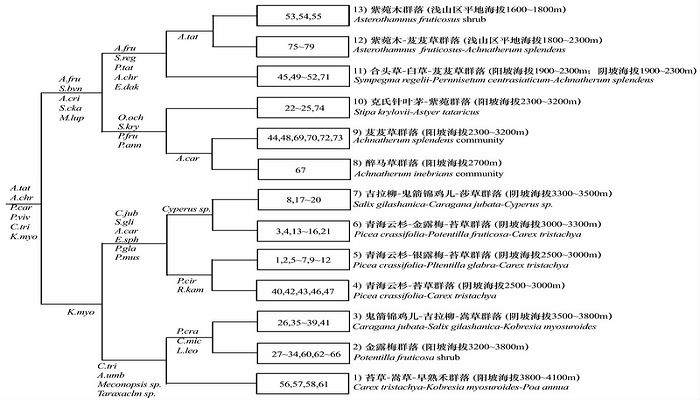Altitudinal Variation Characteristics of the Plant Community on the Upper Reaches of Heihe River in the Qilian Mountains
Updatetime:2010-12-31From:
【Enlarge】【Reduce】
Based on the field survey data from seventy-nine plots, including shallow mountainous area, shady slopes and sunny slopes, using two-way indicator species analysis and other methods, the altitudinal variation characteristics of plant community in the upper reaches of Heihe River in the Qilian Mountains are studied. The study results show that the vegetation in the shallow mountainous area is of mountain desert type. While the vegetation on the shady slopes can be recognized as mountain desert, mountain forest and alpine shrub, depending on altitude, with the dividing lines at 2 500 m and 3 300 m. The vegetation on sunny slopes can be divided into dry type and wet type, with a dividing line at 3 200 m. No certain altitudinal pattern of species diversity of arbor can be seen. Species richness of shrub shows a multi-peak pattern with altitude increase, low in higher altitude and high in lower altitude. The altitudinal pattern of the diversity of herbage species shows a single-peak. Different dominant species of the above ecotypes have different altitudinal range, of which some also shows a certain variation character. For example, Picea crassifoa, the most important arbor species in the Qilian Mountains, is appropriate on the shady slopes between 2 500 m and 3 500 m. Its canopy density decreases with altitude increasing (p<0\^0001), and is scattered at the altitude over 3 300 m.
|
TWINSPAN dendrogram of the plots and species (Picture/Journal of Glaciology and Geocryology) |
Appendix





